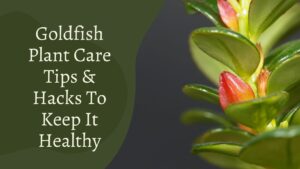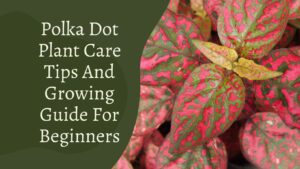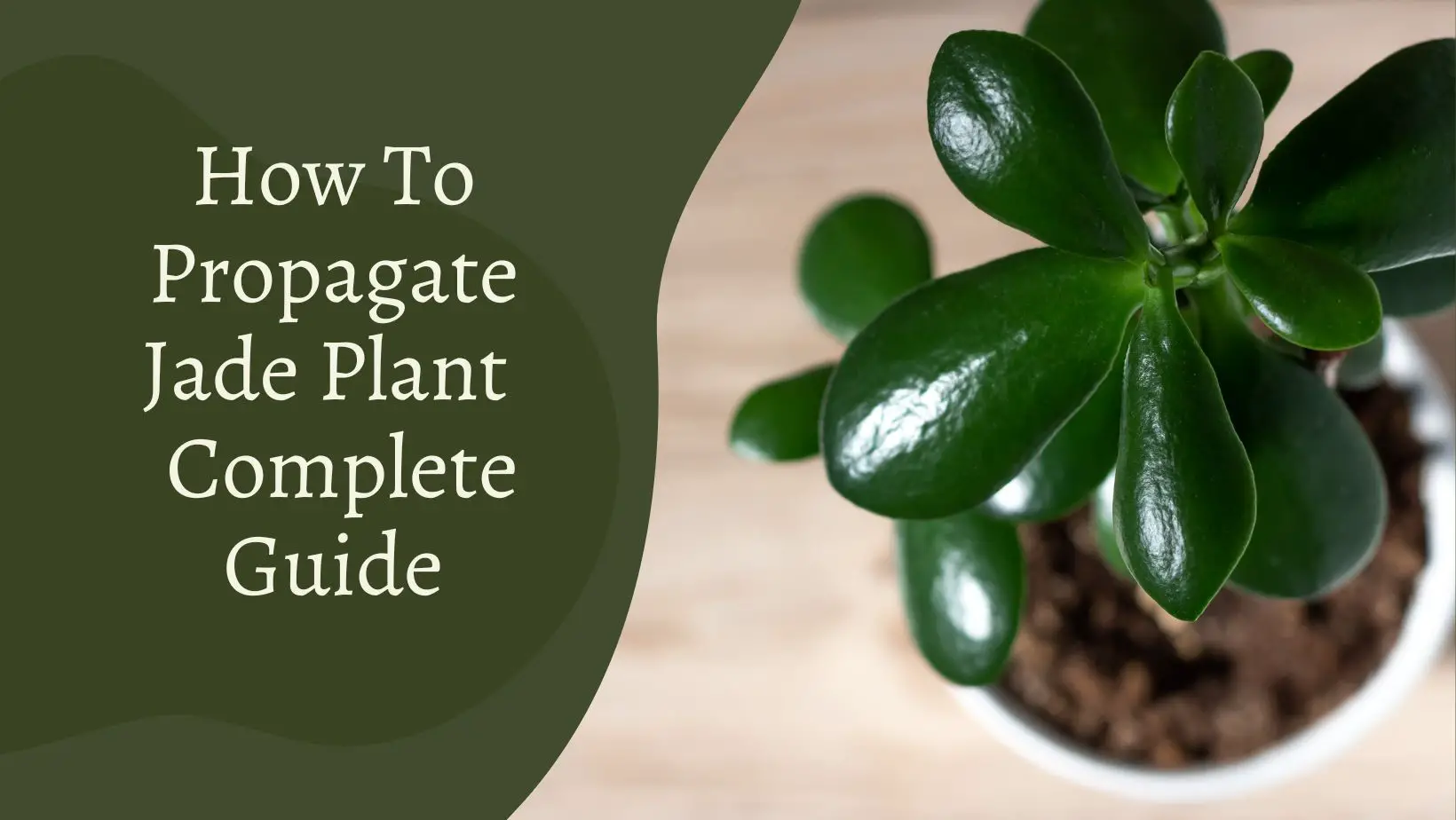
You are probably here because you dont know how to propagate jade plant and this article is all about that. The jade plant (Crassula ovata) is renowned for its forgiving features among the most popular succulents. You may propagate your plant to share this plant as a gift or add to your collection!
The stem cutting approach is often the simplest and most effective method when you know how to propagate jade plant. It is particularly true to use more significant and more robust stem cuttings. Discover all you need to know about how to propagate jade plant to increase the size of your Crassula army.
About it:
Jade plants have a small tree-like look due to their thick, wooden branches and oval-shaped leaves, making them an excellent choice for a beautiful houseplant. They are long-lived, often handed down from generation to generation, and may reach three feet or more in height when cultivated indoors.
Jade plants thrive in the warm, dry conditions seen in most houses. Maintaining a moist environment for the plant during the growth season (spring, summer) and a dry environment during the dormant season (fall, winter) is critical. Even throughout the growing season, however, the soil should be left to dry between waterings since jade is very prone to rot.
Outdoor jade plants may be cultivated as landscaping plants in locations with a year-round moderate, dry environment (typically Zone 10 and warmer). Because they are very vulnerable to cold damage, it is better to plant jade in pots and bring them inside when temps go below 50°F (10°C).
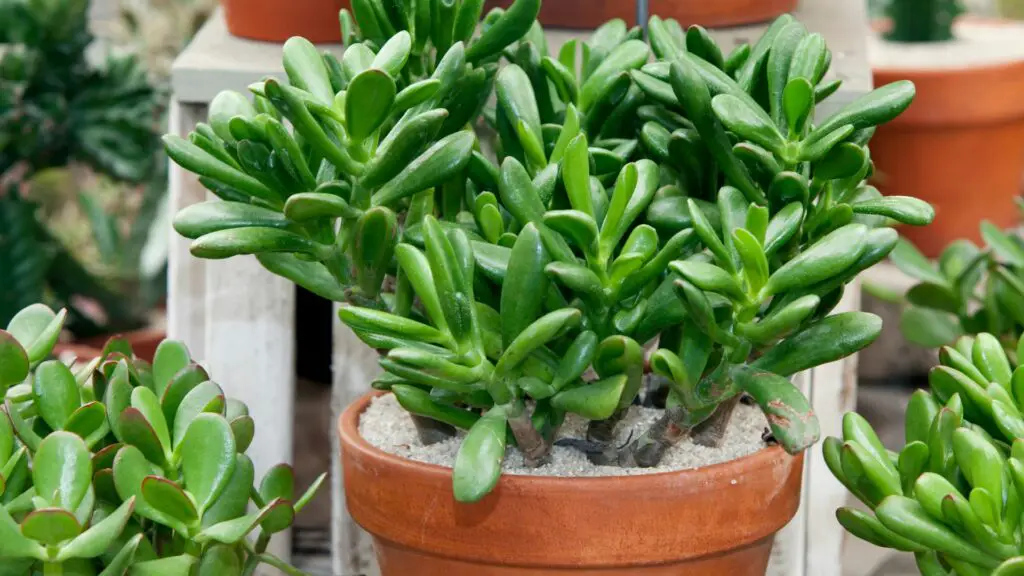
How to Planting the Jade Plants?
![]() Choose a large, solid container with a reasonable depth since Jade plant spreading are prone to becoming top-heavy and jade plant leaves falling off over.
Choose a large, solid container with a reasonable depth since Jade plant spreading are prone to becoming top-heavy and jade plant leaves falling off over.
Utilize well-draining soil since excessive wetness may encourage fungal diseases such as root rot. A general-purpose potting mix will be fine, although you may want to add some perlite for drainage. A 2:1 potting mix to perlite ratio is ideal. Alternatively, it may use a pre-made succulent or cactus potting mix.
After planting a jade plant, do not immediately water it. Allowing the roots to settle and heal from any harm takes several days to a week.
Where to cut jade plant?
Make a clean cut of the stem using a sterilized knife or scissors, picking a portion with at least two nodes (bumps on the stem that leaves and roots can grow from). Include a few healthy leaves as well. Any size stem cutting will suffice. However, most individuals have more luck with more significant cuts.
Prune the jade plant losing leaves from the bottom of the cutting carefully, leaving just a few healthy leaves at the top. Keep any leaves you pick if you wish to grow new jade plants. We’ll explain how to use them below!
Allow about three days for the stem cutting (and any plucked leaves) to sit out in a warm, dry environment. It allows the cut’s damaged edge to heal and callus, making it less prone to decay.
What happens now that your stem cutting is complete? To that end, you have two distinct options, which we’ll explore below.
1. The soil technique
You may root your jade plant stem cutting in soil. Is jade a succulent? Yes because succulents are quite hardy, this nearly always works. The main disadvantage is that you can’t truly monitor the progress of your pruning; at least not until new leaf development appears. Purchase a container or tray with drainage holes. A regular nursery plastic planter would suffice.
Fill the container halfway with loose, well-draining soil. Because jade plants are not fussy, you can combine some basic potting soil with a healthy dose of perlite for increased drainage.
Soak the soil with water. Just enough moisture to feel wet but not soggy.
You may dip the cutting to accelerate root formation if you have rooting hormone powder on hand.
Make a hole in the earth using your finger or a stick. It simply has to be deep enough to support the stem cutting.
Place the stem cutting in bright, indirect light every few days and water it.
Tip: Stem cuttings that have not yet developed roots may drop somewhat. It is typical, but if yours seems to topple over, you may support it with a stick or anything similar. Once it roots, it will resume its upright growth.
2. How to propagate jade plant in water?
Many prefer the Jade plant in water only technique of growing a jade plant since it is often faster and simpler. Most importantly, you have to see the roots grow instantaneously!
Once the stem cutting has been done, just put the stem cutting in such a glass or container to propagate jade plant in water. Then transfer the entire structure to a location with strong, indirect sunlight.
So how often do you water jade plants? Following that, everything that is required is weekly or biweekly water changes. Repot your new jade plant after the roots reach approximately two inches long! However, you may put it all in the water to get a somewhat different impact for an extended time.
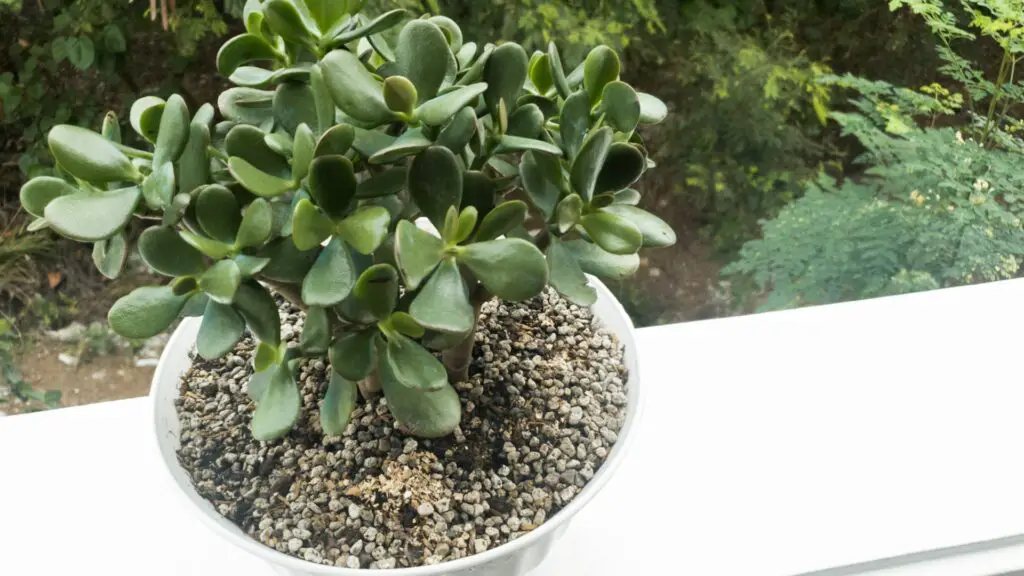
Propagating a jade plant by the leaf technique
If you’ve planted succulents prior, you’re surely aware that several species that you know how to propagate jade plant using just one leaf. Whether you have any fresh or fallen leaves, you might use them to propagate more jade plants! You can carefully remove the leaves off a jade plant’s stems.
As with stem cuttings, you’ll want to allow a few days for your leaves to recover before proceeding & know how to propagate jade plant procedure. Once you have them, you may select between water or soil propagation.
Are you aware? The majority of plants cannot be grown solely from their leaves. It’s a characteristic that is primarily associated with succulents and semi-succulents.
Soil propagation is the simplest technique of growing jade plant leaves. All you have to do is arrange the leaves to contact the soil. That concludes our discussion!
The advantage of employing leaves is that you may combine many of them in a single pot to boost your chances of victory. The resultant plants will initially be tiny, but they may be split into individual pots after growing a little.
Once all of your leaves are in the soil, relocate them to bright, indirect sunshine and spray every few days to keep the soil wet enough. Once roots and baby jade plant sprout, you may gradually transition to a regular succulent watering routine.
For your leaf cuttings, you may use the water approach. It’s more difficult since you have to figure out how to maintain the leaves erect. However, it is not impossible. Suspend the leaves using mesh or toothpicks, ideally in a tiny shot glass.
When Is the Best Time to Propagate Jade Plants
![]() Jade cuttings need a warm, humid, yet well-ventilated environment to establish roots. Thus, summer is the optimal period for propagating jade plants.
Jade cuttings need a warm, humid, yet well-ventilated environment to establish roots. Thus, summer is the optimal period for propagating jade plants.
During the hottest months, jade plants are particularly simple to grow. A branch or leaf may often break off and begin growing roots in the soil without your assistance. However, you may grow jade at any time of year under the appropriate circumstances.
Propagation Supplies for Jade Plants
Before I demonstrate how to grow a jade plant, you may want to gather some ingredients. Not to fear, you will not need an abundance of pricey propagation equipment to root jade plant cuttings; but you will require a few items.
- Stem cuttings or leaves of the jade plant
- Potting soil that is succulent (or mix your own using perlite, potting soil, and coarse sand)
- The hormone that promotes plant roots
- Clean pots (I use 4′′ pots for mine)
- Clippers, pair
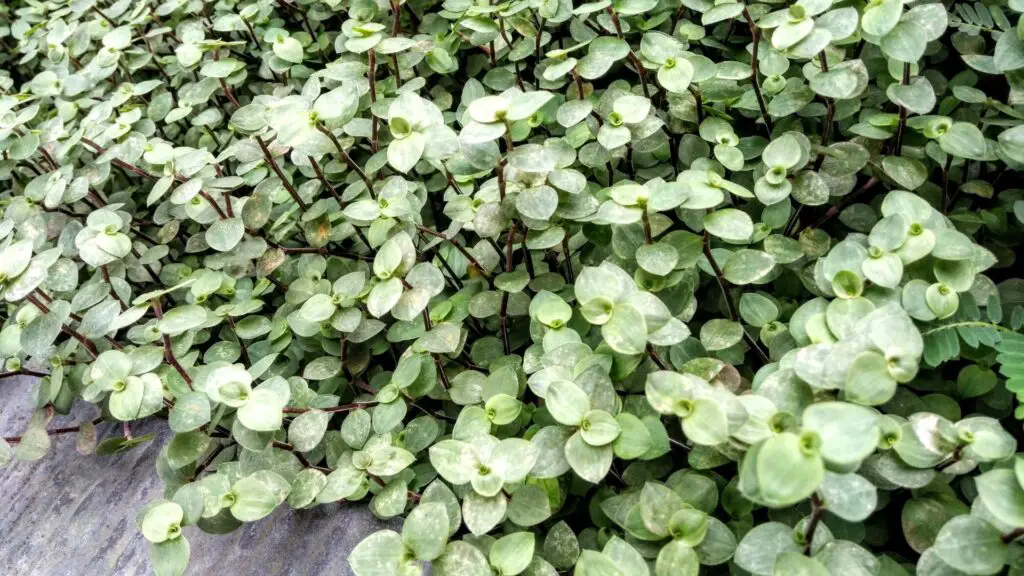
PROPAGATION OF A JADE PLANT FROM CUTTINGS
The quickest technique to get a healthy jade plant is to propagate it from stem cuttings. You may produce stem cuttings of any size, even enormous ones.
Therefore, if a branch has broken off or if you have a damaged stem on your jade plant, you should attempt propagation. When trimming your jade plant, save the cuttings from propagating the plant. Otherwise, if you only want to take a cutting for propagation purposes.
How to plant jade cutting?
The first step in how to propagate jade plant cutting is to decide where to cut the stem to create a new plant.
If you’re taking stem cuttings, ensure that you obtain at least 3-4 inches of the stem to allow for roots. To cut the stem, use clean, sterilized clippers or a knife.
Before cutting jade stems, please put them in rubbing alcohol or wash them in soapy water to sanitize your clippers.
Remove a couple of sets of leaves if they are growing down the whole stem. A jade plant cutting will root from the leaf joints that run the length of the stem. Therefore, the more leaf joints you have, the more likely you will have roots.
Allow a few days for the ends of the cuttings to cure (dry out and callus over) before reproducing. It will assist keep the jade plant cutting from decaying. The greater the size of the cutting, the longer it should cure.It is less of an issue in the summer but is something you should consider if you’re growing succulents throughout the winter.
How to care for a jade plant?
Whichever method you pick, be ready for a gap of 1 to 2 weeks before seeing roots. If you opt to propagate in soil, the procedure will certainly be much slower since you will have a limited view of what is happening under the surface.
Whenever your new plants are developed themselves and have just been repotted (if desired), the following information will assist you in keeping them alive and healthy.
Light
Jade plants thrive in direct, bright sunlight. They are found naturally in South Africa’s arid areas, where they are constantly assaulted by sunshine! Acclimate your plant gradually if it has not been grown in direct sunlight. Your jade plants should develop if they receive approximately three hours of direct sunlight daily.
Temperature
Jade plants grow at moderate temperatures, reaching throughout the 60s (or 30s Celsius). Lower temperatures shouldn’t be a worry as long as it keeps dry and therefore is not exposed to colder weather.
Soil
In terms of soil, any succulent soil should suffice. After all, jade plants are not fussy. You may also use regular potting soil; adding sand or perlite will assist in maintaining an airy environment and ensure that excess water drains appropriately.
Watering
Jade plants seem to be succulents and need special care. You might have to water as frequently as once or thrice a week during the warmer months. During waterings, check that such soil dries fully.
Several things will dictate the specific timing of your watering. For instance, if your home is warm and sunny, you might discover yourself watering more often. If the jade leaves become wrinkled, you’ve waited much too long.
Fertilizing
Jade plants benefit from additional nutrients throughout the growing season, while there seems to be some disagreement over how often to fertilize. While some experts often advocate fertilizing during the growing season, others propose fertilizing just once a year.
In any scenario, you should be OK as long as you avoid using plant food during the winter months when your jade plant is dormant and unable to use the nutrients you supply.
Is jade poisonous to cats and dogs?
Regrettably, jade plants are poisonous to a few animals, such as cats, dogs, and other pets. Set this plant so that it is safely away from your cherished pets! According to the American Society for the Prevention of Cruelty to Animals, poisoning indications include symptoms like depression, vomiting, and a loss of coordination.

How to propagate variegated jade plant?
The first step in growing jade plants from cuttings is to take the jade plant cutting. Choose a healthy, disease-free branch from the jade plant. For roots in a jade plant, the branch should be 3 to 4 inches (8-10 cm.) in length. If the jade plant does not have a branch that long, you may choose to follow the procedures for growing jade plants from leaves (which are lower in this article). Cut the desired branch off the plant using a sharp, clean knife.
Allowing the cutting to dry is the next stage in growing a jade plant from a cutting. If you attempt to root the jade plant cutting moist, the incision will be damp and attract sickness. Rest the jade plant cutting in a dry, preferably warm, location until a callus form (in about one to two weeks). To further protect the jade plant cutting from illness, you may dust the open incision with rooting hormone and anti-fungal ingredients.
Once the jade plant cut has dried, please put it in a potting mixture composed of half vermiculite or perlite and half soil. When roots a jade plant, water carefully until the jade plant cutting takes root. Once it has established a root system, you may treat it like any other jade plant.
How to Root Cuttings from Jade Plant in Soil
The most effective Rooting large jade cutting is to place them in soil. It should not do it in a closed propagation chamber or plastic baggie. If the cuttings are exposed to excessive dampness, they will decay. To root a jade plant cutting in soil, follow the procedures below.
Step 1: Apply rooting hormone to jade cuttings – Not only will the cuttings root more quickly, but you’ll also have greater success growing a jade plant from cuttings when you utilize rooting hormone. The rooting hormone will assist the cuttings in rooting more quickly, and I strongly encourage its use. To apply, sprinkle rooting hormone on the stems of your jade cuttings or the cut ends of your leaves.
Step 2: Fill your container halfway with dirt: Fill a container halfway with your soil mixture. Jade plants root most well in a light, sandy mixture of coarse sand, potting soil, and perlite. Using regular potting soil alone is often too heavy for growing a jade plant and may result in the cuttings rotting. If you do not like to create your own, I propose propagating your jade plant cuttings using a professional succulent soil mix.
Step 3: Create a hole for the stem in the soil — using a pencil or your finger, create a hole in the center of the rooting mixture for the jade plant cutting. Gently insert the slice into the hole to avoid rubbing off the rooting hormone. Then gently pack the dirt around the cutting’s base to ensure that it remains secure and the soil is in touch with the stem. No hole is necessary if you’re growing a jade plant from a leaf. You may place the leaves on top of the dirt or use a thin layer of soil to hide the cut end.
Step 4: Transfer your jade cutting to a secure location – Place the jade plant cutting in a shaded area from direct sunlight. Water your jade is cutting sparingly until roots develop. If the air is really dry, use a plant sprayer/mister to wet the cutting softly. However, caution is advised since they do not need a high humidity level. When new growth appears on the top of the jade plant cutting, it is a positive indication that it has begun to develop roots.
Conclusion:
How to propagate jade plant? So it is quite simple, and there are many techniques available. In this article, I’ll discuss how to propagate jade plant from a leaf or stem cuttings, outline how to take a cutting, and follow instructions of propagating jade plants step by step. It is quite simple to propagate jade plants from leaf or stem cuttings. Indeed, if you’ve never attempted plant propagation before, jades are an excellent choice.
I’ve owned my jade plant for about two decades and propagated it several times. It’s enjoyable and I will provide you lots of information advise you on the most acceptable ways to use and when to employ them. Then I’ll demonstrate how to root jade cuttings from both leaves and stem clippings.

Hi This is Maria, We are a team of gardening enthusiasts with a passion for gardening. We have tried to bring you tips and advice enabling you to grow and maintain a healthy and beautiful garden. We Hope You Find it Useful.





